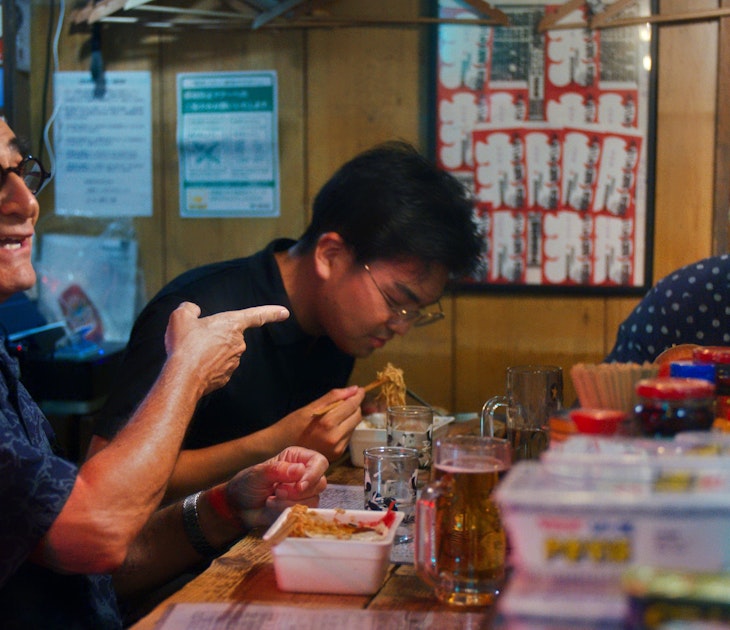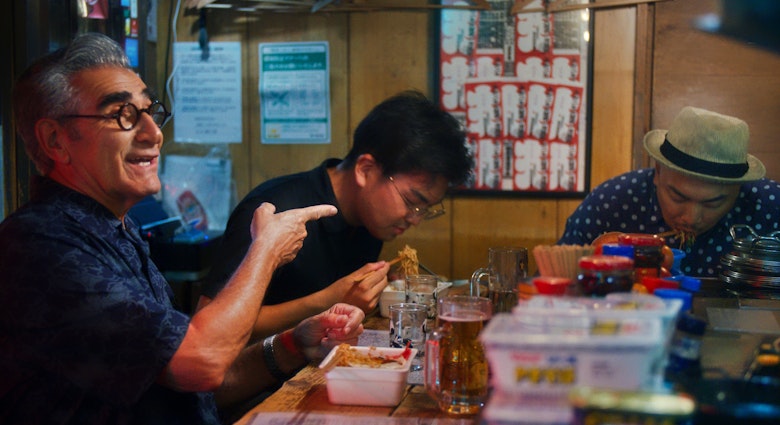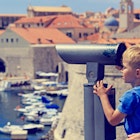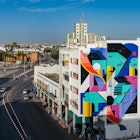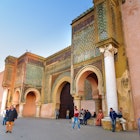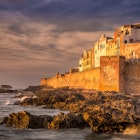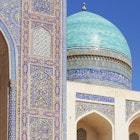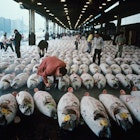Arriving in the Middle Atlas after the maelstrom of Fez, or even Meknès, is like waking up in the morning to find the sun has reared its head after days of fog. The air is fresh, and the sky is always blue. Shepherds lead unhurried lives in the hills, and old-timers sit peacefully in town squares sipping coffee as pitch-black as the night skies.
The mountains here in northern Morocco don’t stand as tall as those in the more popular High Atlas, but there are quaint villages to explore, pilgrim trails to trace and important Roman ruins to transport you back in time. Fragrant cedar forests hide scampering macaques, and empty alpine hiking paths will have you convinced you’ve discovered a place that tourists haven’t, even though a handful of charming local guesthouses make this under-explored area an accessible break from Morocco’s big cities.
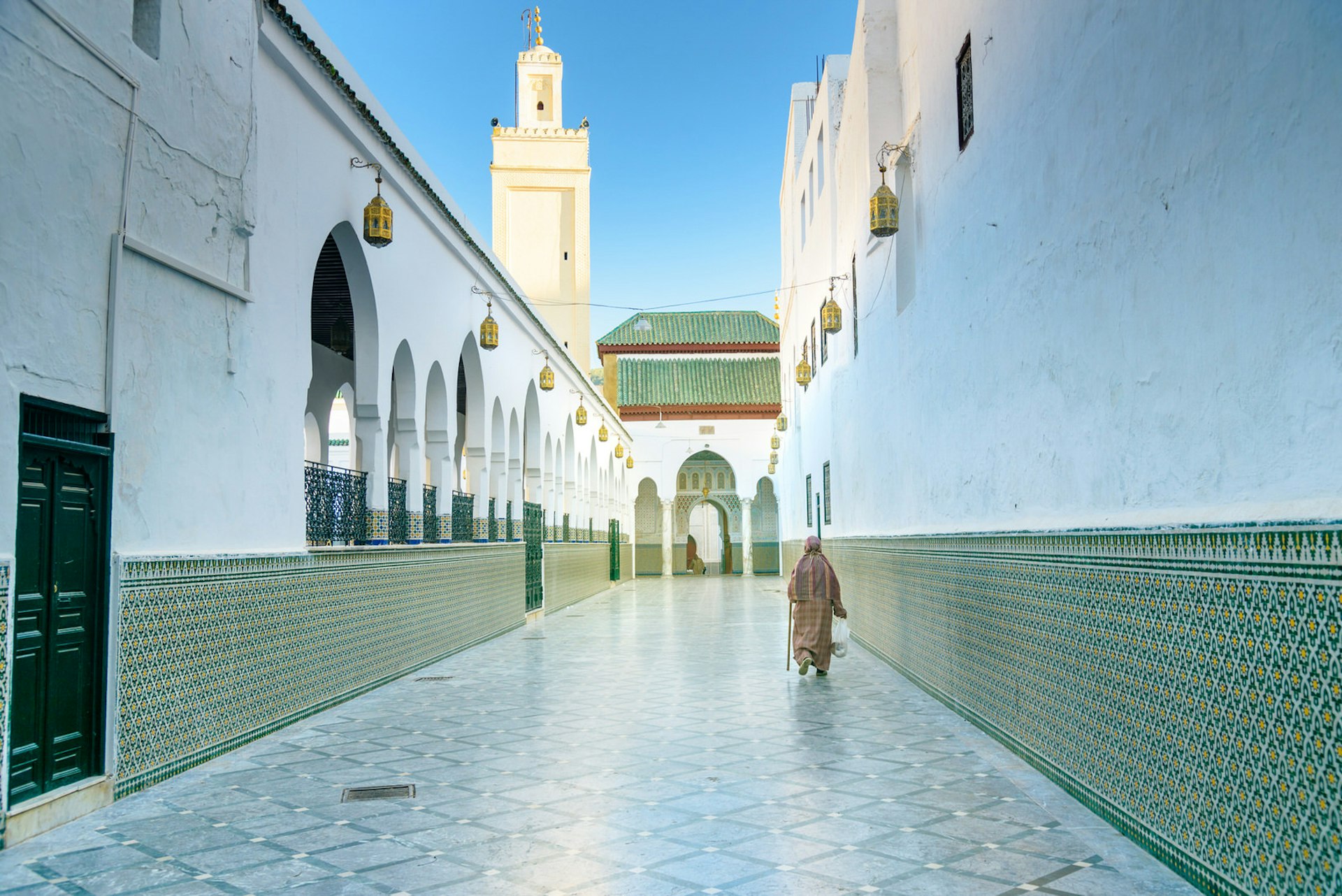
Pilgrimage to Moulay Idriss and Volubilis
The Middle Atlas’s most attractive town gets nowhere near the attention it deserves. Perhaps that’s because Moulay Idriss’s status as one of the holiest places in Morocco meant it was off-limits to non-Muslims until 1912. It was only in 2005 that non-Muslims were allowed to stay overnight, and now there are just a handful of guesthouses (though still a frustrating collection of touts). The town is named after a great-grandson of the Prophet Muhammad, and Moulay Idriss became Morocco’s first Islamic ruler and the country’s most revered saint. His tomb lies at the heart of the hushed medina, making this a hallowed pilgrimage destination.

The whitewashed town paints quite a picture, starkly illuminated on two hills rising from the Middle Atlas plains. From two lookout points at the top of the hilly medina, you can almost see the hazy outline of Volubilis, one of the Roman Empire’s most remote outposts. It is Morocco’s best-preserved archaeological site and the most important attraction in the Middle Atlas, home to floor-mosaic storyboards, impressive arches and a grand Roman road. Both a wander around Moulay Idriss’s medina and a guided tour of Volubilis can be achieved in a day from Meknès, but it is really worth staying overnight. Pastry-making classes on the roof terrace of Dar Zerhoune guesthouse are also worth sticking around for.
Sefrou’s Unesco medina
After Moulay Idriss, Sefrou is the region’s prettiest small town and feels much further off the beaten track. It was here that Moulay Idriss II lived while the Imperial city of Fez was being erected, and it’s still possible to see whispers of what would have once been a grand metropolis. Unesco designation in 2013 helped spur the restoration of Sefrou’s thick-set medina walls and some funduqs (travellers’ inns) within. Taxis from Fez will drop you at Bab El Maqam, from where meandering streets trickle past blacksmiths, textile workers and butchers to a river that bisects the medina and the mellah (the old Jewish quarter). East of the walled core, you can join locals promenading through the lush Jardin Al Kanatir Al Khairia and stop for a coffee by the river.
To really get under the skin of the town, Culture Vultures in Fez runs a tour focusing on Sefrou’s fading Jewish heritage and the lives of artisans working within the medina, or Dar Kamal Chaoui in neighbouring Bhalil can arrange a guided walk of hidden corners you’re unlikely to find by yourself.

Bhalil’s troglodyte houses
Bhalil would make an interesting pitstop for its history and traditions alone, but the fact that this curious village also has a wonderful community-minded guesthouse makes it one of the Middle Atlas’s most pleasant escapes from Morocco’s urban hustle. Cave dwellings dating back to the 4th century pockmark Bhalil’s mountainsides and have served as shepherds huts for hundreds of years, yet some residents have gone one step further and even transformed caves into modern living rooms. Stay at Dar Kamal Chaoui where friendly owner Kamal can organise a village tour that includes a visit to one of Bhalil’s troglodyte houses for tea with its inhabitants.
He can also organise city sightseeing trips and hikes that interact with local Berber families, making Bhalil a good rural base from which to explore further afield. Rooms at Dar Kamal Chaoui are comfy and tastefully decorated with local textiles and Moroccan furniture, but it’s the rooftop overlooking the village where you’ll want to spend lazy afternoons waiting for wafts of home-cooked tagines to reach you. Outside the Dar’s front door, look out for local women sitting in harmonious clusters weaving buttons for djellabas (Morocco’s traditional hooded capes) – one of the village’s main industries.

Azrou and its monkeys
Legend has it that Azrou’s Barbary macaques are descended from an impish family who disrespected their hosts by throwing couscous at each other after being invited for a meal by charitable strangers. The story goes that they had been found lost and hungry in the cedar forests, so God punished the family by turning them into monkeys to run wild in the woods forever. There are still 6000 monkeys in Morocco, and the highest concentration live around the small town of Azrou.
Today, the forests and their truculent inhabitants are the biggest attractions of the Ifrane National Park within which Azrou sits. Sadly, the two troops that live closest to the town, at Cedar Gouraud and Moudmame, live in squalor and have become habituated by being fed by tourists. A far better option is to hire a hiking guide to take you through the area’s forests and up onto the desolate Agdal Plateau, among shepherds, honey farms and abandoned nomadic structures. Stay at Les Jardins d’Azrou just outside town, a peaceful farm and guesthouse run by a Swiss-Moroccan couple, offering farm-to-fork meals. The owner is also an accredited mountain guide. Time your visit with Azrou’s gigantic Tuesday souq, when Berbers come down from the hills to trade animals and sell fruit and veg.

Ifrane’s lake circuit
On the northern edge of Ifrane National Park, a series of lakes well up out of nowhere, and the daily grind feels about as far away from chaotic Fez as you could possibly get. Dayet Aoua, Dayet Ifrah and Dayet Hechlaf are home to an exceptional rabble of bird life, including red kites, booted eagles, coots, marbled teals and woodpeckers, and the lake shorelines are made for gentle hikes and mountain biking. The largest, Dayet Aoua, is popular with picnicking local families at weekends; in summer the water all but evaporates, little pedalos are marooned and locals take to the lake bed on horseback.
A signposted circuit winds for 60km around the lakes off the main Fez road, starting 17km north of Ifrane town (ask locals about the state of the road before setting off). But why rush? Consider a digital detox at Gîte Dayet Aoua instead of a fleeting visit – this rustic lodge with Berber flourishes, its own apple orchard and tasty traditional Amazigh food can help organise horse-riding, cycling or hiking around the lakes with a guide and picnic lunch. As is the case elsewhere in Morocco’s Middle Atlas, you might not see another foreign soul during your stay.

